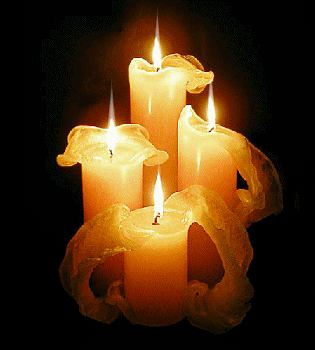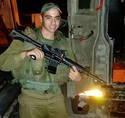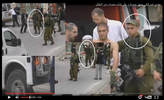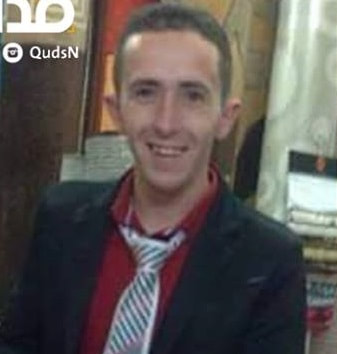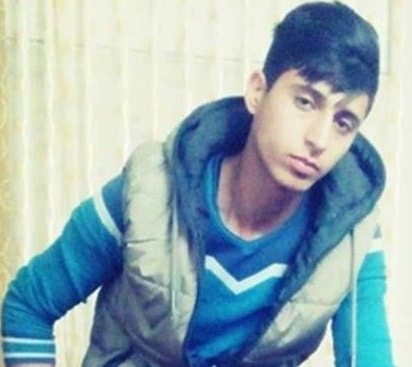27 july 2020
|
|
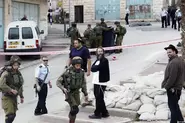
As illegal settlers increase their attacks on Palestinian civilians in the occupied city of Al-Khalil (Hebron), the people of the Palestinian city continue to mount a campaign of popular resistance.
One of the channels of resistance is Human Rights Defenders (HRD), “a grassroots, non-partisan Palestinian organisation, working to support nonviolent popular resistance through popular direct action and documentation of human rights violations committed by the occupation.” To understand the situation in Hebron better, I spoke to Badee Dwaik, head of Human Rights Defenders; Raghad Neiroukh, a journalist, and Flora Thomas, a British solidarity activist. The conversation included another member of HRD, Imad Abu Shamsiyah, the courageous activist who filmed the murder of a young Palestinian man, Abdul Fattah Al-Sharif. On March 24, 2016, Israeli army medic, Elor Azaria, killed Al-Sharif in cold blood in Hebron. The Israeli army later claimed that Al-Sharif, and another Palestinian, tried to stab an Israeli soldier. The murder was rightly dubbed an “extrajudicial execution” by human rights organisations. Under international pressure, Israel tried Azaria in court, sentencing him to 18 months’ imprisonment, but eventually released him 14 months later, to be received as a hero by many Israeli politicians, his family and ordinary people. I asked Abu Shamsiyah about the events that took place on that day, when he had personally witnessed and filmed the execution of the young Palestinian man. “It was about 8 o’clock in the morning and I was having coffee with my wife. I heard the sound of shooting outside, very close to my house,” Abu Shamsiyah began. “I immediately went out to see what was going on, and my wife followed me. She brought the camera with her.” “I found out that a person was lying in the street. He was wearing a black t-shirt and trousers.” |
“I saw that there was also another person on the ground. I moved my camera to capture him on film and noticed that he was bleeding from his face.”
“I observed a few Israeli soldiers approaching one of the people on the ground; they were very close to me.”
“I realised that Abdul Fattah Al-Sharif was a Palestinian only when I saw an Israeli soldier kicking him.”
“When the Israeli soldier kicked him, Al-Sharif moved both of his legs and his hands. I captured this with my camera.”
“At that moment, my wife started shouting, saying: ‘Haram, haram,’ and tried to help the wounded young man.”
“When the soldiers heard her screams, they noticed our presence in the street. So they forced us to leave the street; they chased us away.”
“I went home but I began to think of another way to continue filming. I climbed on to the roof of a neighbour’s house and resumed filming the execution.”
“I saw an Israeli ambulance arriving in the area, but it didn’t go towards Al-Sharif; instead, it went towards the other person who was still lying on the ground. Only then, I realised that the other person was, in fact, an Israeli soldier.”
“So I zoomed in the camera to capture a better image of the soldier, who [looked as if he was] slightly injured. The ambulance gave him first aid and treated him, while they denied any treatment to Al-Sharif and the other wounded Palestinian.”
“They carried the Israeli soldier into the ambulance; I zoomed in again, and he was already standing; as I said before, he was [clearly] only slightly injured.”
“The ambulance began to turn around to leave the area. It was then that I heard the sound of one of the soldiers loading his gun. He got closer and closer to where Al-Sharif was [still lying down]. When he was about one metre away, he pointed the gun at Al-Sharif’s head.”
“Al-Sharif did not pose any threat to the soldier, whose name was revealed later in the media to be Elor Azaria. It was Azaria who shot the wounded Palestinian in the head.”
“I was still filming, and one of the Jewish settlers, who noticed me, told the soldiers about me. One of the soldiers turned towards me and ordered me to leave the area, but I was already leaving because I had filmed the entire scene.”
“I immediately went to the Human Rights Defenders, where I uploaded the video and many people watched it.”
“Israeli soldiers kill Palestinians in cold blood, while accusing Palestinians of trying to stab soldiers.”
Following the incident and, throughout Azaria’s trial, Abu Shamsiyah and his family experienced a lot of harassment by the Israeli army for revealing the truth that Israel wishes to keep hidden: the brutality of its soldiers, and the intrinsic relationship between the occupation army and the illegal settlers.
Speaking to Abu Shamsiyah four years after the tragic death of Al-Sharif, the Palestinian activist remains steadfast in his belief that the ongoing Israeli human rights violations must be exposed. His voice conveys determination, not hesitation or fear.
Human Rights Defenders, like many other Palestinian groups, continues to channel and guide the popular resistance of the Palestinian people in Hebron and many towns and villages across Palestine. They are a testament to the resolve of Palestinian society – brave, steadfast and unbroken.
“I observed a few Israeli soldiers approaching one of the people on the ground; they were very close to me.”
“I realised that Abdul Fattah Al-Sharif was a Palestinian only when I saw an Israeli soldier kicking him.”
“When the Israeli soldier kicked him, Al-Sharif moved both of his legs and his hands. I captured this with my camera.”
“At that moment, my wife started shouting, saying: ‘Haram, haram,’ and tried to help the wounded young man.”
“When the soldiers heard her screams, they noticed our presence in the street. So they forced us to leave the street; they chased us away.”
“I went home but I began to think of another way to continue filming. I climbed on to the roof of a neighbour’s house and resumed filming the execution.”
“I saw an Israeli ambulance arriving in the area, but it didn’t go towards Al-Sharif; instead, it went towards the other person who was still lying on the ground. Only then, I realised that the other person was, in fact, an Israeli soldier.”
“So I zoomed in the camera to capture a better image of the soldier, who [looked as if he was] slightly injured. The ambulance gave him first aid and treated him, while they denied any treatment to Al-Sharif and the other wounded Palestinian.”
“They carried the Israeli soldier into the ambulance; I zoomed in again, and he was already standing; as I said before, he was [clearly] only slightly injured.”
“The ambulance began to turn around to leave the area. It was then that I heard the sound of one of the soldiers loading his gun. He got closer and closer to where Al-Sharif was [still lying down]. When he was about one metre away, he pointed the gun at Al-Sharif’s head.”
“Al-Sharif did not pose any threat to the soldier, whose name was revealed later in the media to be Elor Azaria. It was Azaria who shot the wounded Palestinian in the head.”
“I was still filming, and one of the Jewish settlers, who noticed me, told the soldiers about me. One of the soldiers turned towards me and ordered me to leave the area, but I was already leaving because I had filmed the entire scene.”
“I immediately went to the Human Rights Defenders, where I uploaded the video and many people watched it.”
“Israeli soldiers kill Palestinians in cold blood, while accusing Palestinians of trying to stab soldiers.”
Following the incident and, throughout Azaria’s trial, Abu Shamsiyah and his family experienced a lot of harassment by the Israeli army for revealing the truth that Israel wishes to keep hidden: the brutality of its soldiers, and the intrinsic relationship between the occupation army and the illegal settlers.
Speaking to Abu Shamsiyah four years after the tragic death of Al-Sharif, the Palestinian activist remains steadfast in his belief that the ongoing Israeli human rights violations must be exposed. His voice conveys determination, not hesitation or fear.
Human Rights Defenders, like many other Palestinian groups, continues to channel and guide the popular resistance of the Palestinian people in Hebron and many towns and villages across Palestine. They are a testament to the resolve of Palestinian society – brave, steadfast and unbroken.
2 mar 2020
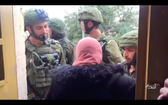
Israeli forces and settlers, stormed the house of a Palestinian family in Hebron, on Sunday, after settlers accused the family of ‘opening fire’ at them.
Palestinian Abu Shamsiyyeh family attempted to fight off the intrusion, the video footage shows Israeli soldiers and settlers breaking into the house. video
The United Nations Universal Declaration of Human Rights states in Article 3 that all people have the right to life, liberty and security of person.
Palestinian have been denied these rights for many decades, and despite laws, resolutions, and declarations, this fact does not change.
Related
4 nov 2019 Two Palestinians kidnaped by IOF in al-Khalil
4 nov 2018 Settlers assault activist Abu Shamsia, his son in al-Khalil
14 sept 2018 A Visit with Imad Abu Shamsieh
6 mar 2018 Attempted car-ramming in al-Khalil against Palestinian by settlers
4 jan 2018 Settlers perform Talmudic rituals on rooftop in al-Khalil
5 aug 2017 Army Abducts A Child And A Man In Hebron; Colonists And Soldiers Injure Three Palestinians
8 jan 2017 Settlers attack house of al-Khalil manslaughter cameraman
4 jan 2017 Activist who filmed Hebron shooting 'fears for his life' after Israeli soldier convicted
21 apr 2016 Ministry of Information, Ma'an honor activist who filmed Hebron killing
1 apr 2016 The medic's deadly shot
1 apr 2016 B'Tselem asks Israel to protect Palestinian who filmed Hebron killing
31 mar 2016 Army Raids Home of Man Who Filmed Hebron Execution
28 mar 2016 Israel hounds witness who filmed gruesome murder
26 mar 2016 Israeli settlers threaten Palestinian who filmed Hebron 'execution'
24 mar 2016 Video by Imad Abu Shamsiyyeh
Palestinian Abu Shamsiyyeh family attempted to fight off the intrusion, the video footage shows Israeli soldiers and settlers breaking into the house. video
The United Nations Universal Declaration of Human Rights states in Article 3 that all people have the right to life, liberty and security of person.
Palestinian have been denied these rights for many decades, and despite laws, resolutions, and declarations, this fact does not change.
Related
4 nov 2019 Two Palestinians kidnaped by IOF in al-Khalil
4 nov 2018 Settlers assault activist Abu Shamsia, his son in al-Khalil
14 sept 2018 A Visit with Imad Abu Shamsieh
6 mar 2018 Attempted car-ramming in al-Khalil against Palestinian by settlers
4 jan 2018 Settlers perform Talmudic rituals on rooftop in al-Khalil
5 aug 2017 Army Abducts A Child And A Man In Hebron; Colonists And Soldiers Injure Three Palestinians
8 jan 2017 Settlers attack house of al-Khalil manslaughter cameraman
4 jan 2017 Activist who filmed Hebron shooting 'fears for his life' after Israeli soldier convicted
21 apr 2016 Ministry of Information, Ma'an honor activist who filmed Hebron killing
1 apr 2016 The medic's deadly shot
1 apr 2016 B'Tselem asks Israel to protect Palestinian who filmed Hebron killing
31 mar 2016 Army Raids Home of Man Who Filmed Hebron Execution
28 mar 2016 Israel hounds witness who filmed gruesome murder
26 mar 2016 Israeli settlers threaten Palestinian who filmed Hebron 'execution'
24 mar 2016 Video by Imad Abu Shamsiyyeh
4 nov 2019
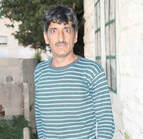
The Israeli occupation forces (IOF) on Sunday evening kidnaped two Palestinian young men from a neighborhood in al-Khalil city.
According to local sources, the IOF stormed Tel Rumeida neighborhood in central al-Khalil, amid intensive gunfire, and physically assaulted the family of activist Emad Abu Shamsiya. video
The IOF also rounded up the son of Abu Shamsiya, Awni, and another young man called Bassam Abu Aisha.
According to local sources, the IOF stormed Tel Rumeida neighborhood in central al-Khalil, amid intensive gunfire, and physically assaulted the family of activist Emad Abu Shamsiya. video
The IOF also rounded up the son of Abu Shamsiya, Awni, and another young man called Bassam Abu Aisha.
25 july 2019

Tariq Zabania 7
This violence will only stop with the end of racist ideology that rationalizes murder
Seven-year-old Tariq Zabania from Al-Khalil (Hebron) was killed on the spot when an Israeli Jewish settler ran his car over him on July 15.
Little Tariq’s photograph, lying face down on the road, was circulated on social media. His untimely death is heartbreaking.
Tariq’s innocent blood must not go in vain. For this to happen, we are morally obliged to understand the nature of Jewish settler violence, which cannot be viewed in isolation from the inherent racism in Israeli society as a whole.
We are all often guilty of perpetuating the myth that militant Jewish settlers in the occupied Palestinian territories are a different and distinct category from other Israelis who live beyond the so-called “Green Line”.
Undoubtedly, the violent mentality that propels Israeli society, wherever it is located, is not governed by imaginary lines but by a racist ideology, of which disciples can be found everywhere in Israel, not just in the illegal Jewish colonies of the West Bank.
Israel is a sick society and its ailment is not confined to the 1967 Occupation of East Jerusalem, the West Bank and Gaza.
While Palestinians are imprisoned behind walls, fences and enclosed regions, Israelis are a different kind of prisoners, too. “A man who takes away another man’s freedom is a prisoner of hatred, he is locked behind the bars of prejudice and narrow-mindedness,” wrote [pdf] the late anti-Apartheid hero and long-time prisoner, Nelson Mandela.
It is this racism and bigotry that makes Tariq invisible to most Israelis. For most Israelis, Palestinian children do not exist as real human beings, deserving of a dignified life of freedom. This callousness is a defining quality, common among all sectors of Israeli society - right, left and center.
An example is the terrorist attack carried out by Jewish settlers against the Palestinian Dawabshe family in the village of Duma, in the northern West Bank in July 2015, resulting in the death of Riham and Sa’ed, along with their 18-months old son, Ali. The only member of the family spared that horrific death was Ahmad, 4, who was severely burned.
This cruelty was further accentuated in the episodes that followed this criminal incident. Later that year, Israeli wedding guests were caught on tape while dancing with knives, chanting in celebration of the death of the Palestinian baby.
Three years later, as the Dawabshe family members were leaving an Israeli court, accompanied by Arab parliamentarians, they were greeted by a crowd of Israelis chanting “Where is Ali? Ali’s dead” and “Ali’s on the grill.”
The passing of time only cemented Israelis’ hatred of a little child whose only crime was his Palestinian identity.
The only survivor, Ahmad, was punished thrice: when he lost his whole family; with his severe burns and when he was denied compensation. The then Israeli Defense Minister, Avigdor Lieberman, simply resolved that the boy was not a “terror victim.” Case closed.
Although the Dawabshes were killed by Jewish settlers, the Israeli court, army and political system all conspired to ensure the protection of the killers from any accountability.
This was no different in the case of Israeli soldier, Elor Azaria, who, on March 24, 2016, killed an unconscious Palestinian man in Hebron. In his defense, Azaria insisted that he was following army manual instructions in dealing with alleged attackers, while top Israeli government officials came out in droves to support him.
When Azaria was triumphantly released following only nine months in jail, he was hailed by many Israelis as a hero. Possibly, he will have a successful career in politics should he decide to pursue that route. In fact, he was courted by Israeli politicians to help them garner more votes in April’s general elections.
Condemning solely Jewish settlers while sparing the rest of Israeli society is equivalent to political whitewashing, one that presents Israel as a healthy society prior to the occupation of the West Bank and Gaza. This view presents Jewish settlements as a cancerous disease that is eating up at the otherwise proud and noble achievements of early Zionists.
It is convenient to classify Jewish settlers as rightwing extremists and to link them with Israel’s ruling right-wing political parties. But history proves otherwise.
It was Israel’s Labor Party that created the settlement projects originally, soon after the colonization of the West Bank. Some of Israel’s largest, and most militant colonial enterprises, in occupied East Jerusalem - Ramat Eshkol, Gilo, Ramot and Armon Hanatziv - are all the creation of the Labor Party, not the Likud.
Neither is the ‘settler’ a new phenomenon. Historically, the early settlers who preceded the establishment of Israel in 1948 were idealized as true Zionists, celebrated as “cultural heroes” - the Jewish redeemers, who eventually ethnically cleansed historic Palestine from its native inhabitants.
“The original Labor movement,” wrote Amotz Asa-El in The Jerusalem Post, “never thought settling beyond the Green Line was illegal, much less immoral.” If there was any debate in Israel regarding settlements, it was never truly concerned with the issue of legitimacy or legality, but practicality: whether these colonial projects can be sustained or defended.
Protecting the settlements is now the overriding task of the Israeli occupation army. The Israeli human rights organization, B’Tselem, which monitors the conduct of the Israeli army and Jewish settlers in the West Bank, explained the nature of this relationship in a report published in November 2017.
“Israeli security forces not only allow settlers to harm Palestinians and their property as a matter of course – they often provide the perpetrators escort and back-up. In some cases, they even join in on the attack,” B’Tselem wrote.
Another Israeli organization, Yesh Din, concluded in a report published earlier that 85% of cases involving settler violence against Palestinians are never pursued by law. Of the remaining cases, only 1.9% led to conviction, which is likely to be inconsequential.
Jewish settler violence should not be analyzed separately from the violence meted out by the Israeli army, but seen within the larger context of the violent Zionist ideology that governs Israeli society entirely.
This violence can only end with the end of the racist ideology that rationalizes murder, like that of little Tariq Zabania.
This violence will only stop with the end of racist ideology that rationalizes murder
Seven-year-old Tariq Zabania from Al-Khalil (Hebron) was killed on the spot when an Israeli Jewish settler ran his car over him on July 15.
Little Tariq’s photograph, lying face down on the road, was circulated on social media. His untimely death is heartbreaking.
Tariq’s innocent blood must not go in vain. For this to happen, we are morally obliged to understand the nature of Jewish settler violence, which cannot be viewed in isolation from the inherent racism in Israeli society as a whole.
We are all often guilty of perpetuating the myth that militant Jewish settlers in the occupied Palestinian territories are a different and distinct category from other Israelis who live beyond the so-called “Green Line”.
Undoubtedly, the violent mentality that propels Israeli society, wherever it is located, is not governed by imaginary lines but by a racist ideology, of which disciples can be found everywhere in Israel, not just in the illegal Jewish colonies of the West Bank.
Israel is a sick society and its ailment is not confined to the 1967 Occupation of East Jerusalem, the West Bank and Gaza.
While Palestinians are imprisoned behind walls, fences and enclosed regions, Israelis are a different kind of prisoners, too. “A man who takes away another man’s freedom is a prisoner of hatred, he is locked behind the bars of prejudice and narrow-mindedness,” wrote [pdf] the late anti-Apartheid hero and long-time prisoner, Nelson Mandela.
It is this racism and bigotry that makes Tariq invisible to most Israelis. For most Israelis, Palestinian children do not exist as real human beings, deserving of a dignified life of freedom. This callousness is a defining quality, common among all sectors of Israeli society - right, left and center.
An example is the terrorist attack carried out by Jewish settlers against the Palestinian Dawabshe family in the village of Duma, in the northern West Bank in July 2015, resulting in the death of Riham and Sa’ed, along with their 18-months old son, Ali. The only member of the family spared that horrific death was Ahmad, 4, who was severely burned.
This cruelty was further accentuated in the episodes that followed this criminal incident. Later that year, Israeli wedding guests were caught on tape while dancing with knives, chanting in celebration of the death of the Palestinian baby.
Three years later, as the Dawabshe family members were leaving an Israeli court, accompanied by Arab parliamentarians, they were greeted by a crowd of Israelis chanting “Where is Ali? Ali’s dead” and “Ali’s on the grill.”
The passing of time only cemented Israelis’ hatred of a little child whose only crime was his Palestinian identity.
The only survivor, Ahmad, was punished thrice: when he lost his whole family; with his severe burns and when he was denied compensation. The then Israeli Defense Minister, Avigdor Lieberman, simply resolved that the boy was not a “terror victim.” Case closed.
Although the Dawabshes were killed by Jewish settlers, the Israeli court, army and political system all conspired to ensure the protection of the killers from any accountability.
This was no different in the case of Israeli soldier, Elor Azaria, who, on March 24, 2016, killed an unconscious Palestinian man in Hebron. In his defense, Azaria insisted that he was following army manual instructions in dealing with alleged attackers, while top Israeli government officials came out in droves to support him.
When Azaria was triumphantly released following only nine months in jail, he was hailed by many Israelis as a hero. Possibly, he will have a successful career in politics should he decide to pursue that route. In fact, he was courted by Israeli politicians to help them garner more votes in April’s general elections.
Condemning solely Jewish settlers while sparing the rest of Israeli society is equivalent to political whitewashing, one that presents Israel as a healthy society prior to the occupation of the West Bank and Gaza. This view presents Jewish settlements as a cancerous disease that is eating up at the otherwise proud and noble achievements of early Zionists.
It is convenient to classify Jewish settlers as rightwing extremists and to link them with Israel’s ruling right-wing political parties. But history proves otherwise.
It was Israel’s Labor Party that created the settlement projects originally, soon after the colonization of the West Bank. Some of Israel’s largest, and most militant colonial enterprises, in occupied East Jerusalem - Ramat Eshkol, Gilo, Ramot and Armon Hanatziv - are all the creation of the Labor Party, not the Likud.
Neither is the ‘settler’ a new phenomenon. Historically, the early settlers who preceded the establishment of Israel in 1948 were idealized as true Zionists, celebrated as “cultural heroes” - the Jewish redeemers, who eventually ethnically cleansed historic Palestine from its native inhabitants.
“The original Labor movement,” wrote Amotz Asa-El in The Jerusalem Post, “never thought settling beyond the Green Line was illegal, much less immoral.” If there was any debate in Israel regarding settlements, it was never truly concerned with the issue of legitimacy or legality, but practicality: whether these colonial projects can be sustained or defended.
Protecting the settlements is now the overriding task of the Israeli occupation army. The Israeli human rights organization, B’Tselem, which monitors the conduct of the Israeli army and Jewish settlers in the West Bank, explained the nature of this relationship in a report published in November 2017.
“Israeli security forces not only allow settlers to harm Palestinians and their property as a matter of course – they often provide the perpetrators escort and back-up. In some cases, they even join in on the attack,” B’Tselem wrote.
Another Israeli organization, Yesh Din, concluded in a report published earlier that 85% of cases involving settler violence against Palestinians are never pursued by law. Of the remaining cases, only 1.9% led to conviction, which is likely to be inconsequential.
Jewish settler violence should not be analyzed separately from the violence meted out by the Israeli army, but seen within the larger context of the violent Zionist ideology that governs Israeli society entirely.
This violence can only end with the end of the racist ideology that rationalizes murder, like that of little Tariq Zabania.
